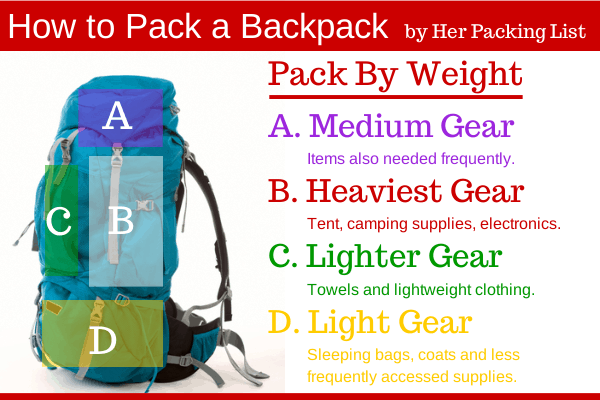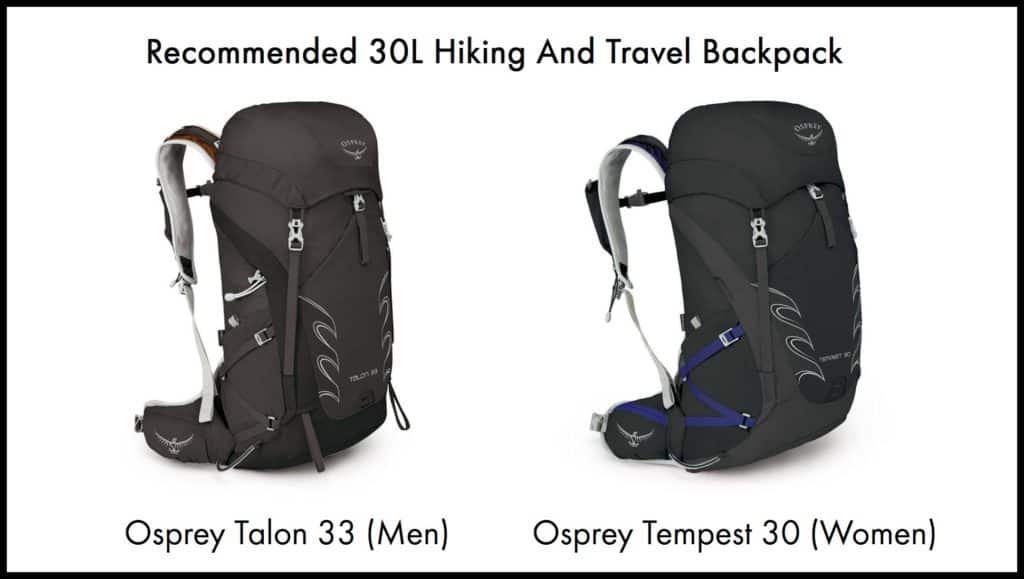
Getting the right backpack is one of the most important things you can do when you are hiking or climbing.
There are so many backpack brands out there today that it can feel overwhelming. Many of them have similar features and their prices don’t vary a lot.
What sets a brand apart from the others would be its commitment to quality. Osprey backpacks are extremely lightweight without compromising on features or performance. They even have a warranty that is unbeatable in the market.
These Are My Top Three 30L Hiking And Travel Backpack For Men And Women
- Osprey Talon 33 (Men’s) / Osprey Tempest 30 (Women’s) (click to check the current price on Amazon): This is a classic backpack brand name. The key selling point is its weight — it’s 30% lighter than many similar backpacks in the market. The Talon 33 model is the range for men and the Tempest 30 is the range for women.
- Gregory Zulu 30 (click to check the current price on Amazon): Another well-established brand. It’s sleek and minimalist design makes it stylish even for everyday use.
- Quechua MH100 30L (click to check the current price on Amazon): This is your budget option. I love that this backpack has a top and bottom opening which allows me to access my stuff more easily. It is just slightly heavier than the Osprey. Quechua is distributed mainly through Decathlon. Decathlon has been winning over consumers with its quality products at competitive prices. Do take note that it is usually cheaper to buy the backpack through Decathlon than Amazon.
How Big Should My Backpack Be?
The number of days you will be hiking or climbing will determine your backpack size. This is a general guide:
- 1 — 3 nights: 30 — 50 liters
- 3 — 5 nights: 50 — 80 liters
- 5+ nights: 70 liters or larger
But these may vary due to other factors such as:
- Gear and equipment
- Do you need to carry special climbing equipment or tools?
- Do you need to carry a tent or a sleeping bag?
- Do you need to carry your own food and water supplies?
- Season
- If you are hiking or climbing in winter, you will need more space for your cold wear.
- Individual preferences and comfort level
- Are you comfortable with wearing the same set of clothes for a few days?
- Are you a light packer or do you prefer to have more stuff “just in case”?
For me, a 30L backpack is usually enough for a 2 day 1 night trip. You can even use this backpack for a 3 to 4 day trip if you do not need to carry tents or a lot of food and water (e.g. you are on a guided expedition or staying in mountain huts etc).
How Big Is A 30L Backpack?
This varies slightly from brand to brand and model to model.
For the Osprey Talon 33:
.
- Height from top to bottom: 24 in/ 62cm
- Width from side to side: 12 in/ 30cm
- Depth from front to back: 11 in/ 29 cm
It is estimated to carry about 20 to 30 lb (7 to 13 kg) of stuff.
The Tempest 30 is slightly smaller and lighter than the Talon 33.
Both the Talon 33 and Tempest 30 also have the option for 1 size smaller.
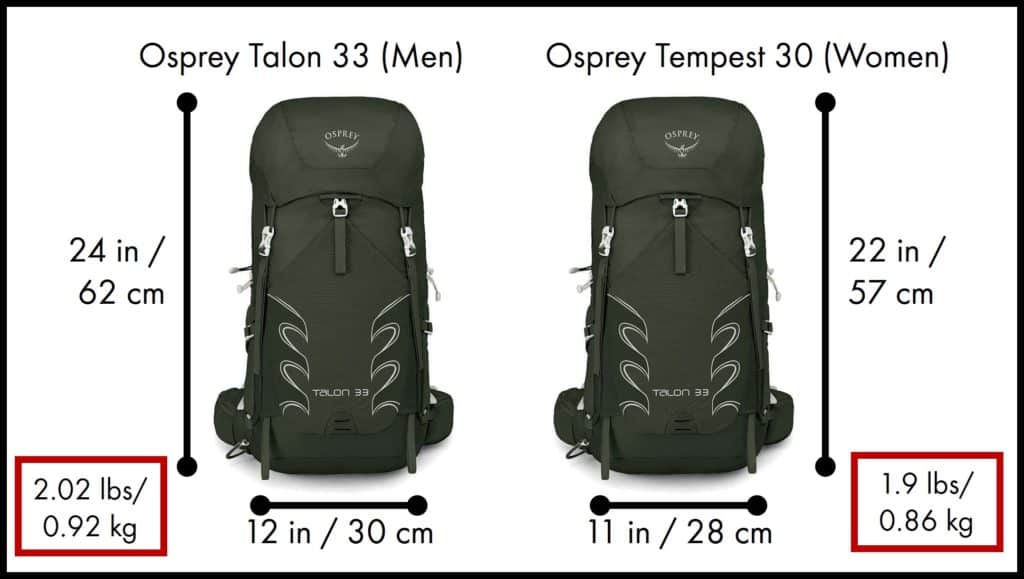
What Features Should A Backpack Have?
- Fit to torso length: The most important thing is for the backpack to be a right fit for your torso length. Read more in the section below on how to fit your backpack.
- Lightweight: I used to have a backpack that already felt heavy when it was empty. Every bit counts on the mountains, so having a light backpack is a must-have for me.
- Padding on shoulder straps: A backpack can feel a lot heavier than it really is when the shoulder straps are cutting into your skin. Make sure the shoulder straps have decent padding or cushion.
- Back padding: Likewise, you want to have decent padding on the back of your backpack. This will prevent hard or bulky items in your backpack from jutting into your back.
- Back ventilation: Even if you are climbing in the cold or in winter, you will be sweating more than you think. Sweating on your back is unavoidable but it helps when the sweat can evaporate quickly.
- Hip belt: The majority of your backpack’s weight should be resting on your hip instead of on your shoulders. This will help you avoid aches and pain in your neck, shoulders, and back. Even if you are going for a half day hike, having a hip belt on your backpack can make a world of difference!
- Extra compartments: There are many things I would like to keep handy during a trip — water bottle, maps, phone, snacks, gloves etc. I always look for backpacks with many extra compartments or pockets.
- Side pocket for a water bottle and/or an opening for a hydration bladder: It is easier to stay hydrated when my water is within easy reach.
- Tool attachments: Depending on the nature of your trip, you may have hiking sticks, ice axe, crampons or other equipment. Some backpacks have straps or clips to hook these pieces of equipment when they are not in use.
- Top and bottom openings: For backpacks that are 30 liters and more, it is nice to have one that has a bottom opening. You can reach for your things easily without having to pour out the entire content of your backpack.
Why I Chose The Osprey Talon 33/ Tempest 30 Backpack
- Adjustable height: It can be easily adjusted to suit varying torso length. This will ensure that you get the best fit for your backpack. This is a big plus if you are also sharing the backpack with someone else.
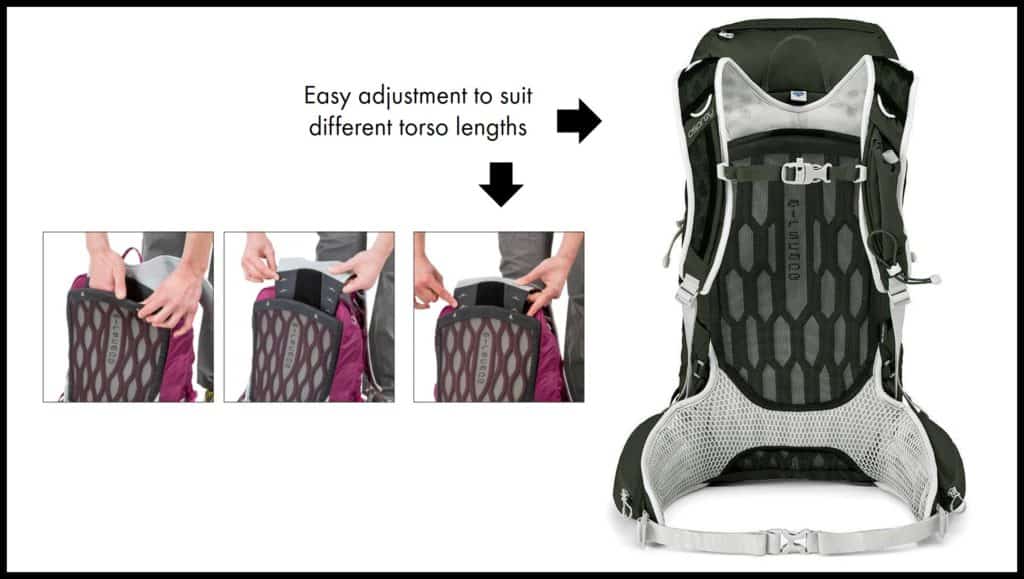
- Lightweight: It weighs 2 lbs (0.9 kg). This is 0.7 lbs (0.3 kg) lighter than the Gregory Zulu 30.
- Slim profile: I like how the backpack is slimmer than other 30L backpacks. It actually prevents my stuff from getting all jumbled up within the backpack. And it looks sleek on both men and women!
- All round excellent comfort: It has thick padding on its back, its shoulder straps, and hip belt. The backpack also has decent ventilation in the back to help sweat evaporate faster.
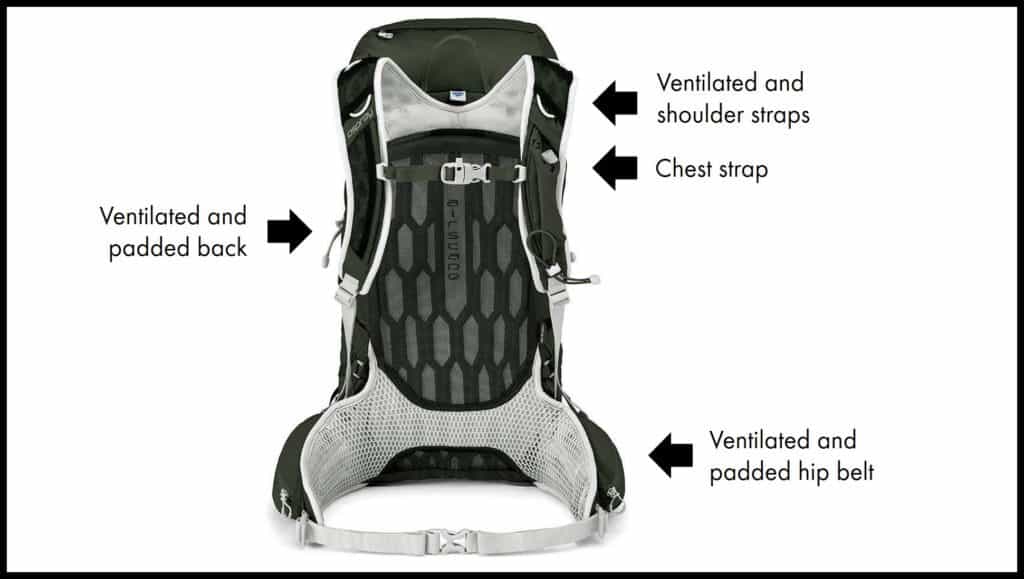
- Lots of pockets and compartments: It has compartments on the top, front, sides and even on the hip belt. This is super useful to small items and stuff that you want easy access to such as your phone, jacket, hat, gloves etc.
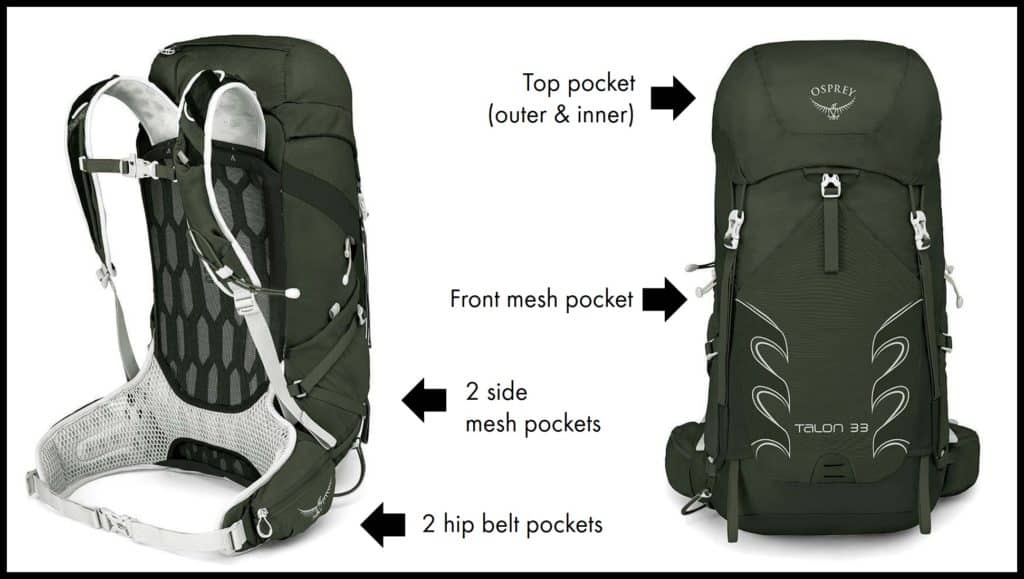
- Multiple loops and straps for equipment and tools: There’s even a loop on the shoulder strap where you can strap your trekking poles without taking off the backpack.
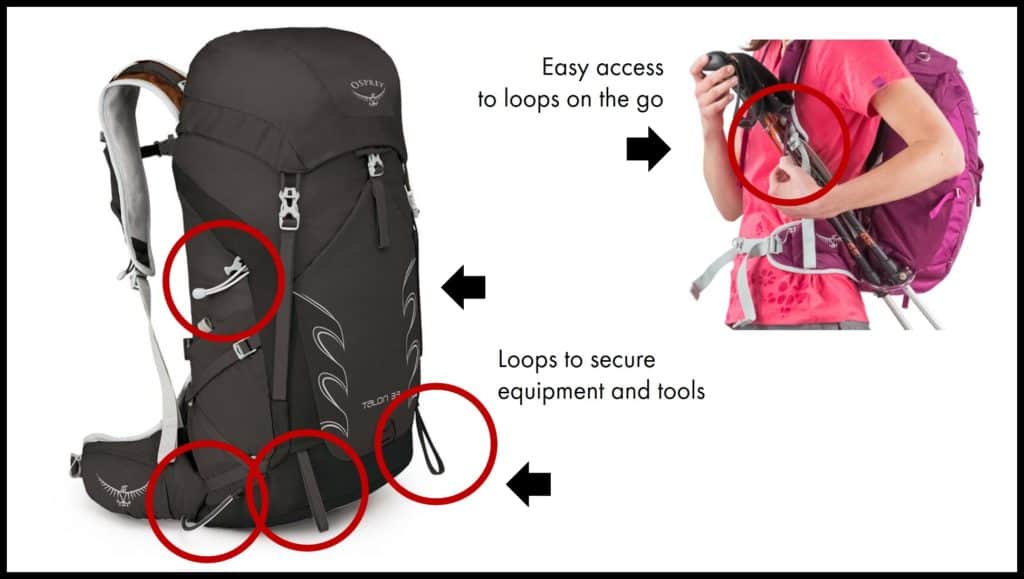
- Space for water bottle and hydration bladder
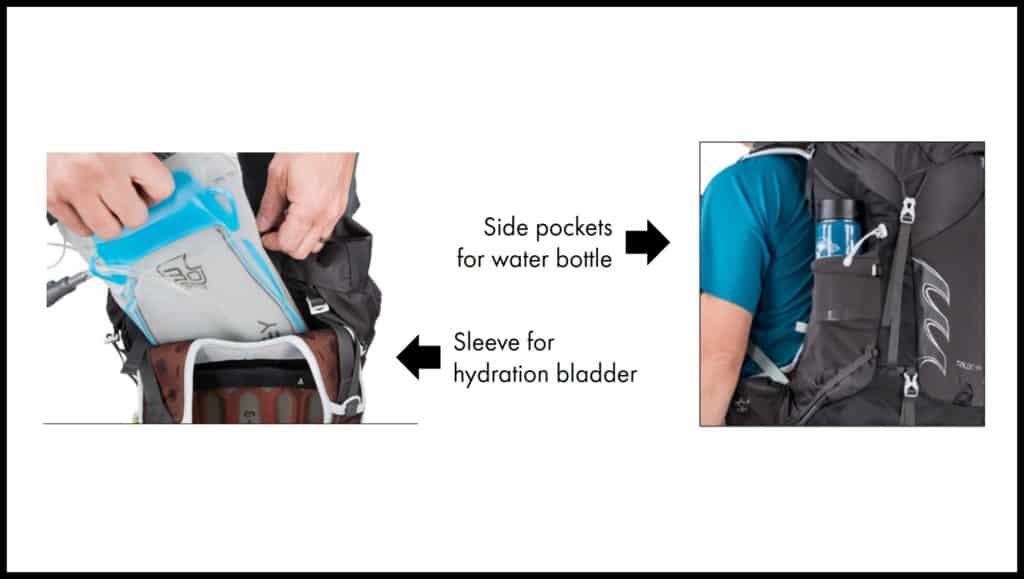
- Super thoughtful design for all the small things: The chest strap bucket has an integrated whistle. There’s also a small opening at the bottom of the backpack to drain water out in case your hydration bladder leaks.
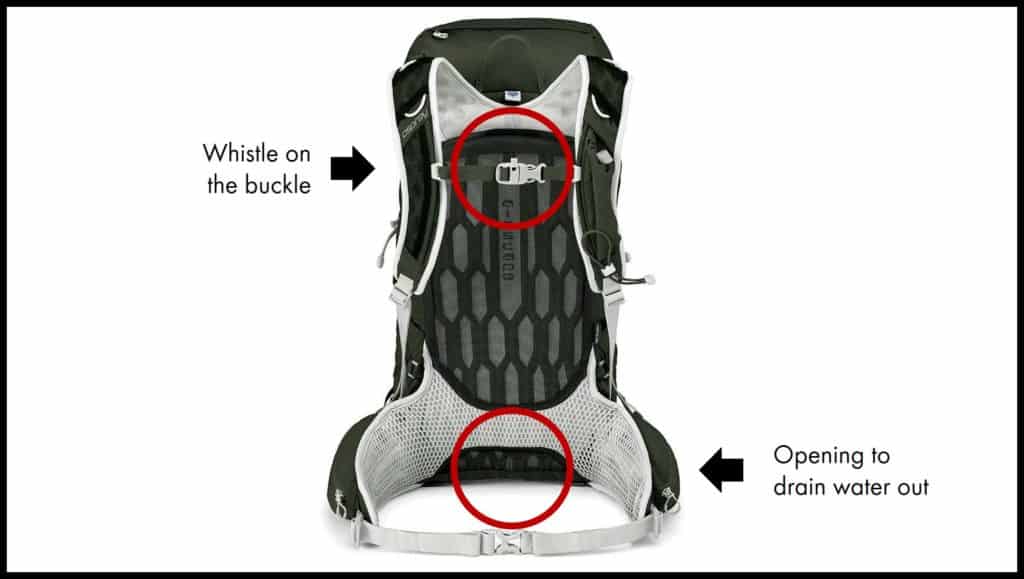
- Unbeatable warranty:
- Covers for as long as you own it.
- Covers defects and damages for any reason.
- But these terms seem to only apply to the US and not to every country.
- More information on that here.
What I Wish The Osprey Talon 33/ Tempest 30 Have
- Bottom opening: It only opens from the top. This is a bit of a hassle when you need to retrieve something from deep in the backpack.
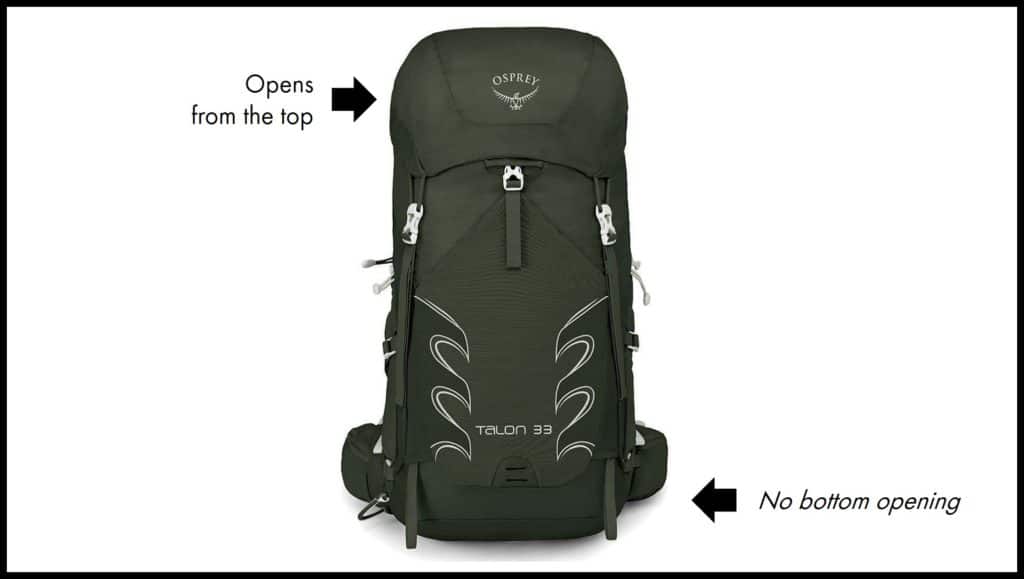
- Raincover: The backpack does not come with a rain cover. You will need to get it separately. Amazon
- A more stylish design: Nothing to complain about but it just pales in comparison to the Gregory Zulu 30.
Comparision At A Glance: Osprey Talon 33/ Tempest 30 Vs Gregory Zulu 30 Vs Quechua Mh100 30L
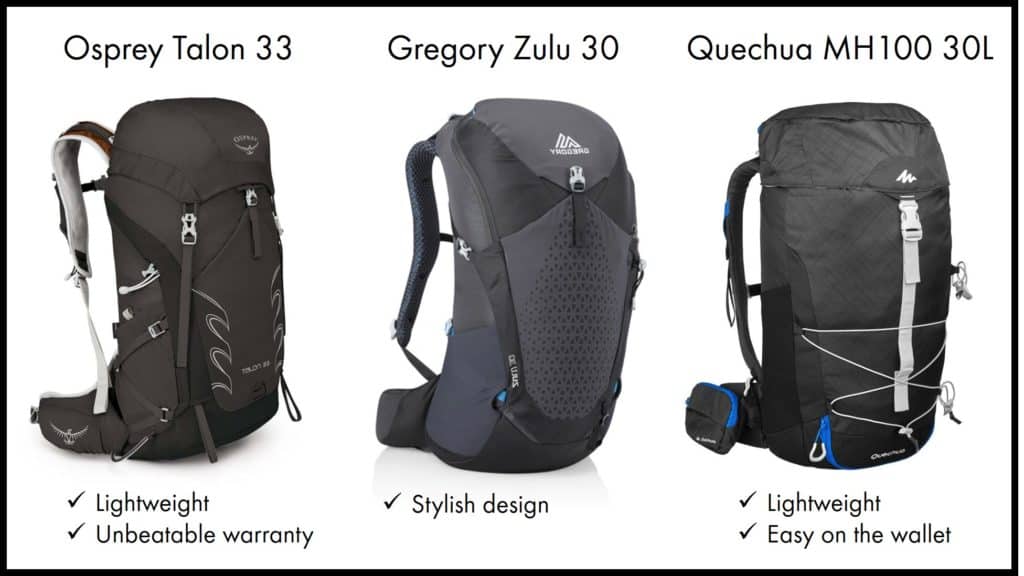
| Osprey Talon 33/ Tempest 30 | Gregory Zulu 30 | Quechua MH100 30L | |
| Weight | 2.02 lbs/ 0.92 kg | 2.73 lbs / 1.24 kg | 2.2 lbs / 0.99 kg |
| Size | Height: 24 in / 62 cm Width: 12 in/ 30 cm Depth: 11in / 29 cm | Height: 24 in / 60 cm Width: 12 in / 31 cm Depth: 10 in / 25 cm | Height: 23 in / 58 cm Width: 12 in / 30 cm Depth: 8 in / 21 cm |
| Adjustable height | Yes | Yes | No |
| Comfort | Padded back, shoulder straps and hip belt | Padded back, shoulder straps and hip belt | Padded back, shoulder straps and hip belt |
| Back ventilation | Yes | Yes | Yes |
| Extra compartments | – Top pocket – Front mesh pocket – 2 side mesh pockets – 2 hip belt pockets | – Top pocket – Front mesh pocket – 2 side mesh pockets – 2 hip belt pocket | – Top pocket – Bungee cords on the front – 2 side pockets – 1 hip belt pocket |
| Water | – Sleeve for hydration bladder – Side pockets for water bottle | – Sleeve for hydration bladder – Side pockets for water bottle | – Sleeve for hydration bladder – Side pockets for water bottle |
| Tool attachments | Yes | Yes | Yes |
| Warranty | – Covers for as long as you own it. – Covers defects and damages for any reason. – These terms seem to only apply to the US and not to every country. – More information here. | – Covers for as long as you own it. – Covers against defects in materials and workmanship. – Does not cover against wear and tear. – More information here. | – Covers for 10 years. – Covers against defects in materials and workmanship. – Does not cover against wear and tear. – More information here. |
| Bottom opening | No | No | Yes |
| Raincover | No | Yes | No |
| Aesthetics | Ok | Stylish | Ok |
| Price | Check latest price on Amazon: – Talon 33 (Men’s) – Tempest 30 (Women’s) | Check latest price on Amazon | Check latest price on Amazon |
How Heavy Should Your Backpack Be?
A good guideline could be to keep the weight of your backpack at about 20% of your bodyweight. But if you are on the lighter side, your backpack is likely to be closer to 25% to 30% of your bodyweight.
In all cases, you need to train with your full backpack weight before the climb.
How To Pack Your Backpack?
You don’t want your backpack to throw your balance off.
For better balance, you need to keep your center of gravity low. So you should pack all heavy items near the middle of your backpack. And when you are carrying your backpack, the heavier items should be close to your back (instead of on the outside of your backpack).
The weight of your backpack should be well balanced across both shoulder straps. Avoid packing heavy items on one side of the backpack.
How Do You Fit And Wear A Backpack?
Once you put your backpack on, you should make adjustments at these 3 areas:
1. Hip belt
- The hip belt should rest on the top of your hip bones. If it is too high or too low, adjust the length of the shoulder straps until the position is right.
- If the hip belt is sitting on your hips and the shoulder straps are adjusted, there should be no huge gap between the backpack and your shoulders. If there is, the backpack may be too long for you.
- The hip belt should be tight enough so that the weight of the backpack can sit on your hip bones. It should not be too tight that it causes discomfort.
2. Shoulder straps
- The shoulder straps should bring the backpack close to your back.
- The backpack should be high on your back and not down at your lower back. This adds pressure to your shoulders and lower back.
- There should not be a huge gap between your backpack and your back.
- If the shoulder straps are well adjusted and the hip belt is now at your waist, the backpack is too short for you.
- Your backpack should not be swaying from side to side as you walk. If it is, either your shoulder straps are too loose or the weight inside your backpack is unbalanced.
When fitted properly, most of the weight of the backpack should be on your hips and not on your shoulders.
3. Chest strap
- When clipped on, the chest strap should be an inch or so (2.5cm) below your collar bones.
- The chest strap helps to prevent the backpack from sliding off your shoulders. It also reduces the tension to your back muscles from the weight of the backpack.
Some Good Practices On The Trail
- If your shoulders or back are aching, loosen the hip belt and tighten the shoulder straps. When your muscles feel a bit looser, do the opposite. You can alternate back and forth to reduce fatigue.
- Remove your backpack and do some stretches whenever you stop for breaks. Try to do this every hour or so to prevent aches and strains.

